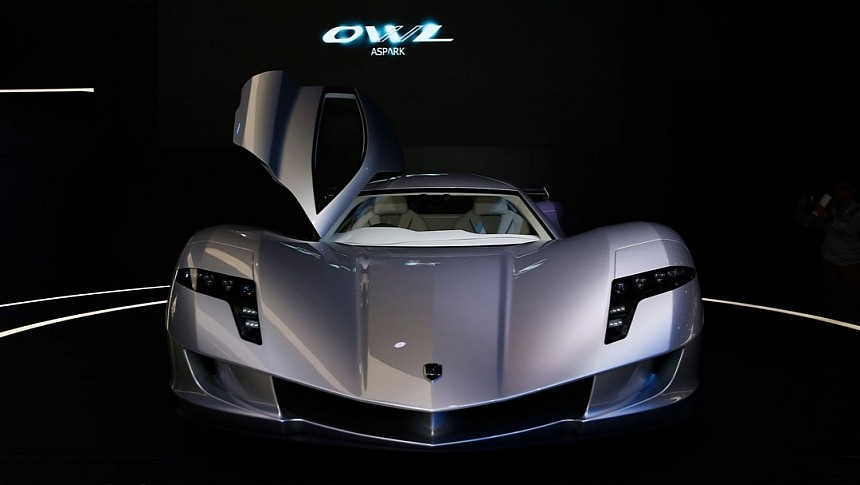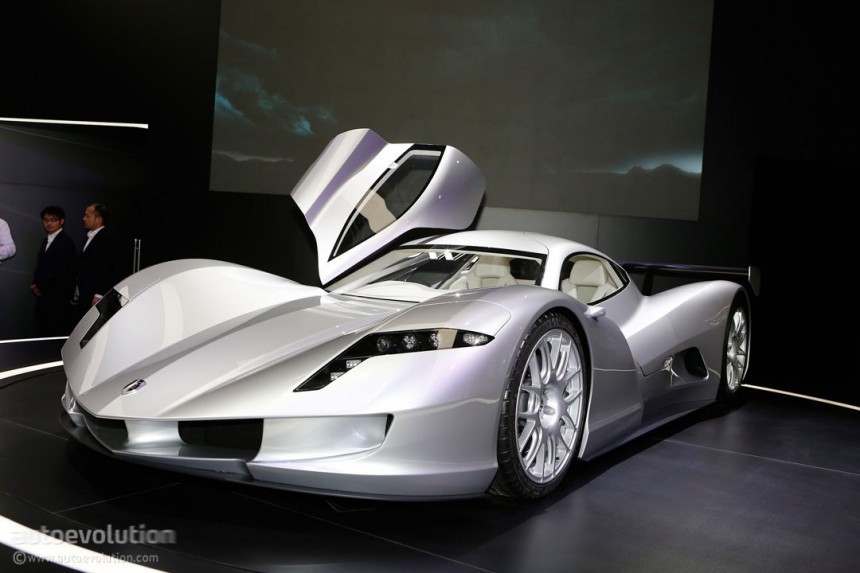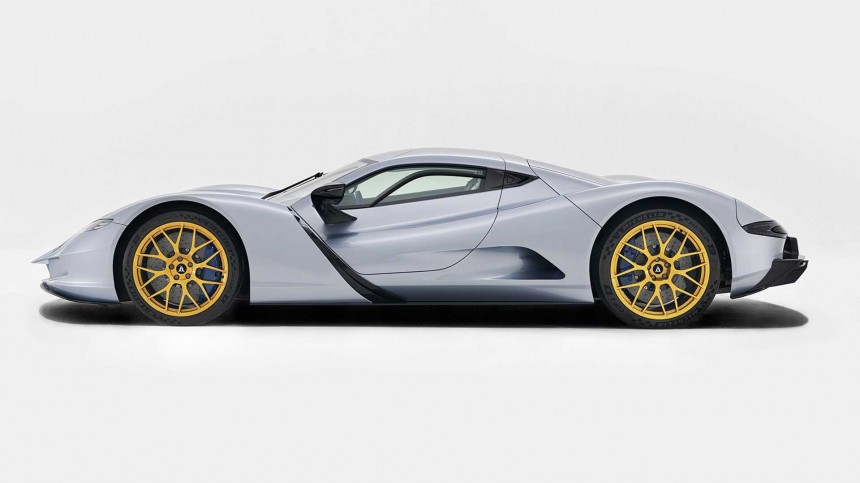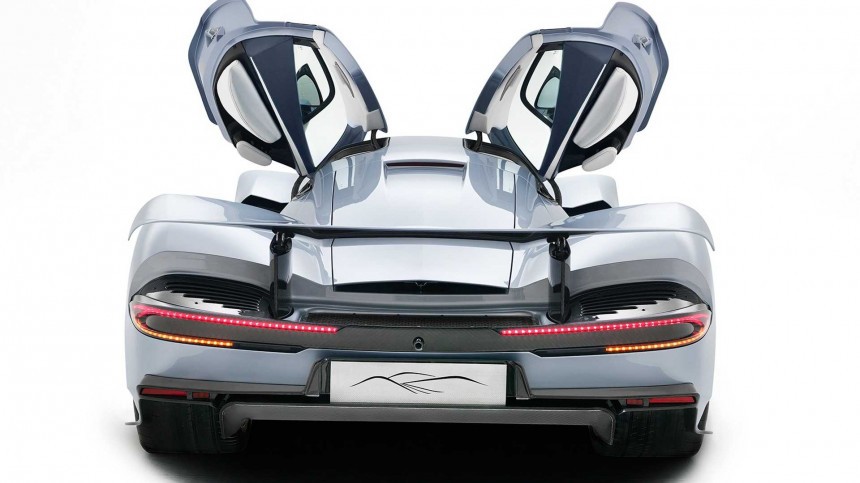The Rimac Nevera broke several world records on May 17, including the lowest 1/8-mile and 1/4-mile times for a production car. Only eight days later, the Japanese carmaker Aspark seemed to have beaten the Croatian company with the Owl by setting two new world records for the eighth mile and quarter mile. However, they were different records – related to average speeds. What about the times?
I have contacted Guinness World Records and the UK Timing Association to try to understand that. After all, if a vehicle can reach the highest average speeds in these distances, that should mean it was also the quickest car to do so. It is also strange that the Japanese electric hypercar did not beat two other important figures: times from 0 to 60 mph and 0 to 100 kph. After all, it had to accelerate as fast as possible to reach 192.02 mph (309.02 kph) for the eighth mile and 198.12 mph (318.85 kph).
Aspark officially states that the Owl can go from 0 to 60 mph in 1.72 seconds. The Nevera achieved that speed after 1.74 s. As close as that would be, the Japanese hypercar would have beaten the Rimac if that time had been measured. If it weren't, it is worth asking why that was the case. That would have been an amazing opportunity to prove the Owl is "officially amazing," as the Guinness World Records calls anyone and anything that manages to break its records.
If you look for answers on the Japanese automaker's website, things get even more confusing. The Owl is 4.79 meters (188.6 inches) long, 1.91 m wide (75.2 in), only 0.91 m (35.8 in) tall, and has a wheelbase of 2.75 m (108.3 in). The Nevera is almost the same size as the Aspark: 4.75 m (187 in) long, 1.99 m (78.4 in) wide, 1.21 m (47.6 in) tall, and the same wheelbase as the Japanese competitor. In the unlikely possibility that the Japanese had a higher aerodynamic coefficient than the Rimac's 0.3, its frontal area is smaller. In other words, it should resist airflow much less. Aspark did not disclose the aerodynamic coefficient of its electric hypercar.
Still according to Aspark's website, the Owl runs the quarter-mile in 8.73 s. The Nevera did that in 8.25 s. There is no information about how much time the Aspark needs to finish the eighth mile, but the Rimac took 5.44 s to run that distance.
Let's compare the official 0-to-60-mph (97 kph) and 0-to-100-kph (62-mph) times of the Aspark. As you already know the former (1.72 s), the latter is 1.91 s, which means it needs 0.19 s to add 2 mph (3 kph) to its speed. The Nevera's times are 1.74 s and 1.81 s, respectively. The difference is a mere 0.07 s. That probably means the Aspark is heavier and less powerful, right? No, not really.
The Owl weighs 2,000 kilograms (4,409 pounds), or 300 kg less than the Rimac (2,300 kg, or 5,071 lb). It also has 1,456 kW, which Aspark translates as 1,980 hp, a common confusion of taking hp for ps. That's 1,980 ps or 1,953 hp. The Nevera apparently counts on 1,400 kW, but that is not certain. Rimac says that's equivalent to 1,914 hp, but that is not right: it is 1,903 ps or 1,877 hp. If the Croatian hypercar really presents 1,914 hp, that's 1,427 kW. If Rimac took hp for ps and the Nevera has 1,914 ps, that's 1,408 kW. Quite a mess with numbers, but what truly matters here is that the Nevera is also weaker than the Owl. Torque could seem to make a difference, but no. The Rimac offers a total of 2,360 Nm (1,741 pound-feet), while the Aspark counts on 1,920 Nm (1,416 lb-ft). However, both companies disclosed the torque at the wheels: 13,430 Nm for the Nevera (9,905 lb-ft) and 13,440 Nm (9,913 lb-ft) for the Owl. Now what?
There is no apparent technical explanation for the Owl not to be faster than the Nevera. Even its top speed is higher: 413 kph (257 mph) against 412 kph (256 mph). Rimac also converted that wrong: for the Croatian company, 412 kph is 258 mph instead of 415 kph – the correct conversion. With all that in mind and Owl's new records, we have two questions that need answers.
The first is: did it beat the Nevera's times? If the reply to that is negative, the most important thing to clarify emerges: why not? It is lighter, more powerful, and has the fastest average speeds when completing the eighth mile and the quarter mile. If they were powered by combustion engines, I could think of a few reasons for the Aspark to be the fastest but not the quickest in these distances. Yet, both are battery electric vehicles (BEVs).
Only Aspark, Guinness World Records, and the UK Timing Association have the answers we want. Someone should probably pit them in a track that is able to handle their mindblowing speeds to verify who did the best job at delivering all that power to the wheels.
Aspark officially states that the Owl can go from 0 to 60 mph in 1.72 seconds. The Nevera achieved that speed after 1.74 s. As close as that would be, the Japanese hypercar would have beaten the Rimac if that time had been measured. If it weren't, it is worth asking why that was the case. That would have been an amazing opportunity to prove the Owl is "officially amazing," as the Guinness World Records calls anyone and anything that manages to break its records.
Still according to Aspark's website, the Owl runs the quarter-mile in 8.73 s. The Nevera did that in 8.25 s. There is no information about how much time the Aspark needs to finish the eighth mile, but the Rimac took 5.44 s to run that distance.
The Owl weighs 2,000 kilograms (4,409 pounds), or 300 kg less than the Rimac (2,300 kg, or 5,071 lb). It also has 1,456 kW, which Aspark translates as 1,980 hp, a common confusion of taking hp for ps. That's 1,980 ps or 1,953 hp. The Nevera apparently counts on 1,400 kW, but that is not certain. Rimac says that's equivalent to 1,914 hp, but that is not right: it is 1,903 ps or 1,877 hp. If the Croatian hypercar really presents 1,914 hp, that's 1,427 kW. If Rimac took hp for ps and the Nevera has 1,914 ps, that's 1,408 kW. Quite a mess with numbers, but what truly matters here is that the Nevera is also weaker than the Owl. Torque could seem to make a difference, but no. The Rimac offers a total of 2,360 Nm (1,741 pound-feet), while the Aspark counts on 1,920 Nm (1,416 lb-ft). However, both companies disclosed the torque at the wheels: 13,430 Nm for the Nevera (9,905 lb-ft) and 13,440 Nm (9,913 lb-ft) for the Owl. Now what?
The first is: did it beat the Nevera's times? If the reply to that is negative, the most important thing to clarify emerges: why not? It is lighter, more powerful, and has the fastest average speeds when completing the eighth mile and the quarter mile. If they were powered by combustion engines, I could think of a few reasons for the Aspark to be the fastest but not the quickest in these distances. Yet, both are battery electric vehicles (BEVs).
Only Aspark, Guinness World Records, and the UK Timing Association have the answers we want. Someone should probably pit them in a track that is able to handle their mindblowing speeds to verify who did the best job at delivering all that power to the wheels.




































